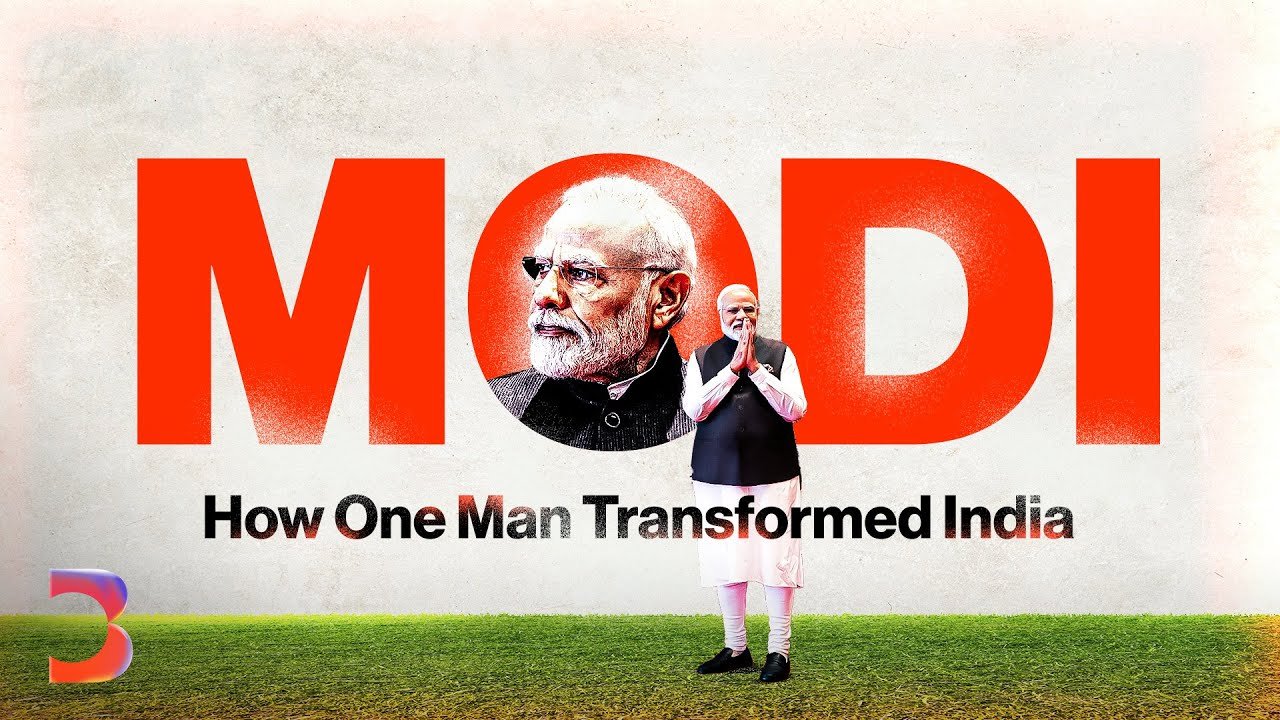Narendra Modi, India’s 73-year-old prime minister, is both highly popular and deeply polarizing. How did he work his way to the top of Indian politics, and what do his policies mean for the country’s future, both at home and on the world stage?
Bloomberg Originals speaks with childhood friends, government officials and former associates who have seen Modi up close over the years, seeking to understand how his core beliefs may have shaped his decision-making. We also show how he has sought to simultaneously make himself a champion of the poor and a friend to billionaires.
Sitting at the top of the world’s most populous nation and one of its fastest growing economies, Modi occupies a uniquely important and powerful position in geopolitics, global trade and finance – especially as China’s growth has slowed. We explain how he got there, and what may come next.
Read more about How Narendra Modi Is Preparing for a Thousand-Year Legacy on Bloomberg:
For more coverage on Modi, India’s elections, and other news from Asia, subscribe to Bloomberg’s new Big Take: Asia podcast:
#india #politics #documentary
0:00 Introduction: Who is Narendra Modi?
1:51 Early Years: From Vadnagar to the RSS
5:01 Hindu Heart: Politics and Religion
9:45 Development Man: Inside the Gujarat Model
13:47 Ruler of India: From Tea Seller to PM
20:20 1,000 Year Legacy
——–
Like this video? Subscribe:
Get unlimited access to Bloomberg.com for $1.99/month for the first 3 months:
Bloomberg Originals offers bold takes for curious minds on today’s biggest topics. Hosted by experts covering stories you haven’t seen and viewpoints you haven’t heard, you’ll discover cinematic, data-led shows that investigate the intersection of business and culture. Exploring every angle of climate change, technology, finance, sports and beyond, Bloomberg Originals is business as you’ve never seen it.
Subscribe for business news, but not as you’ve known it: exclusive interviews, fascinating profiles, data-driven analysis, and the latest in tech innovation from around the world.
Visit our partner channel Bloomberg Quicktake for global news and insight in an instant.
source

Read more about How Narendra Modi Is Preparing for a Thousand-Year Legacy on Bloomberg: https://www.bloomberg.com/features/2024-modi-legacy-india-elections/?srnd=homepage-asia
Subscribe to Bloomberg's new podcast Big Take: Asia
👉 🎧 https://link.chtbl.com/4JsuHjHY
Still we won't forget bbc documentary on him
he spoiled our nation without him we would have had better development
Modi the face of Bharath Representation… I want him to be the PM, I want him to serve people as PM, I want him to live as a PM, The Man Modi the heartbeat of crores of Hindustanis… 😎🤏 🙏🙏🙏…
You are trying to divide India, not the leaders of India.
Nathuram Godse, the man who assassinated Mahatma Gandhi, was not a member of the RSS in 1948. Godse had joined RSS but soon fell out due to ideological differences. Present factually correct data.
As an Indian , I reject this biased report
This is propeganda of west😢
Biased 😮
Break the integral part of India
NGL, It looks like a dhruv rathee video with just bloomberg tag.
Western snobbery & hypocrisy as its peak. The west is ignorant of its problems back home while they find every opportunity to demean india. For the west "IGNORANCE IS BLISS".
George soros sponsors bloomberg
It is a propgenda show.
What transformed?
He's Decisive not divisive
Why show incorrect incomplete map of india
This is what is called "anti India media "
The moment I saw Arunachal as disputed teritory, I realised you are not worth my time..
Map of India at 2:02….And they say press does not have freedom in India? Get the map corrected immediately.
Modi is the best
Wrong title…. Leader for Akhand Bharat that is.. larger Unified INDIA… there will be now BJP for next 100 yrs.
Modi 🙌🙌🔥♥️
What a biased reporting!
2:03 Show the correct & Official Indian maps..😡😡 You desire dislikes for it..
Lol, anyone who says minority is marginalized needs to stay in India
Are you sure? He says he had a divine birth
Really? Lifted ppl off poverty? How exactly?
Alright, let’s break this down into simpler terms:
1. **How Modi is portrayed**:
– On the positive side, he’s shown as a great speaker, someone who’s boosted India’s economy and made the country more respected globally.
– On the negative side, critics call him authoritarian, a Hindu nationalist, and say he’s hurt India’s secular identity (the idea of treating all religions equally).
2. **Story structure**:
– The documentary starts with Modi’s humble beginnings, making him relatable, before diving into the controversies around his policies.
– It uses strong phrases like “death knell of secular India” to suggest that Hindu nationalism is a planned strategy.
3. **What’s missing**:
– Big events like demonetization, farmer protests, and the oxygen crisis during COVID-19 aren’t mentioned.
– It talks about Modi being cleared of blame for riots but skips debates about whether the justice system is truly independent.
4. **Economic focus**:
– It mentions poverty reduction but doesn’t talk much about issues like unemployment or informal jobs.
– It praises Adani’s infrastructure work but doesn’t address claims of favoritism toward him.
**Strengths**:
The documentary tries to balance Modi’s achievements with criticisms, using different viewpoints to avoid being one-sided.
**Weaknesses**:
It oversimplifies complex issues, skips deeper discussions on inequality and favoritism, and uses emotional language that might sway viewers without solid proof.
**Final takeaway**:
The documentary gives a basic overview of Modi’s impact, showing how he’s changed India’s economy and global image. But it simplifies political and social issues and leaves out key events. To get a full picture, viewers should look into more detailed analyses of his policies and hear from different voices.
Hope that clears things up!
NATION AWARENESS – (ALL INDIANS AFFECTED) – Rupee value is falling because of failed Saffron Hindutva BJP governance. Beware.
Bloomberg❌ Islamberg✅
Why always Ambani and Adani prises him lot I Think only they are benficerys
2:03 what is wrong with you? Get your maps right
Jai bjp jai bharat vande mataram